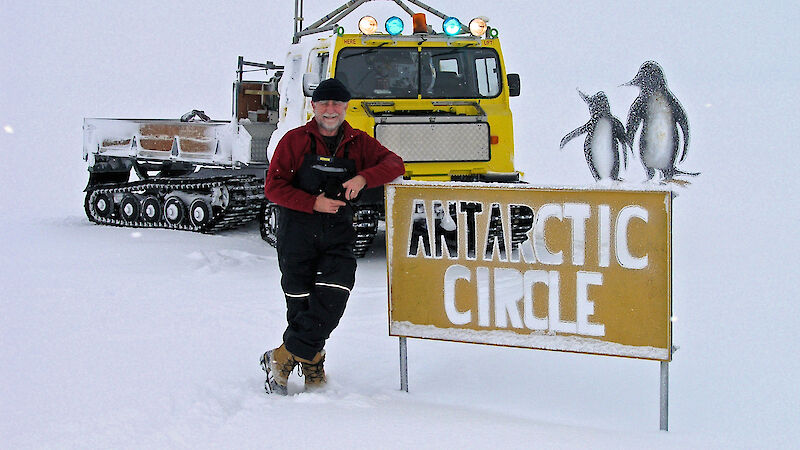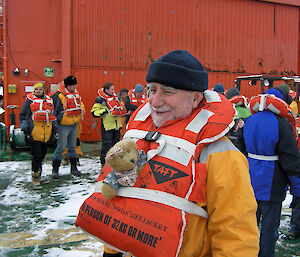Former Operations Branch Head, Kim Pitt, provides the third and last story in this ‘Changing of the Guard’ series, reflecting on his time with the Australian Antarctic Division as he prepares to retire.
I joined the Royal Australian Naval College from school and spent more than 32 years in the operational arms of the Royal Australian Navy (RAN), mostly at sea in submarines but with career excursions into intelligence and logistics. During a six year exchange with the Royal Navy and the Royal Canadian Navy, I participated in Arctic operations and developed an interest in working in cold regions.
I left the RAN in October 1997 and two days later started at the Australian Antarctic Division; just in time to participate in the expeditioner field training program at Bronte Park.
When I started I wanted to ensure the (former) Operations Branch delivered a service that matched the needs and requirements of the organisation; to build even better relationships with our colleagues in science; and to take advantage of opportunities to advance Australia’s interests internationally, at the operational level.
Accepting that there is much still to be done, I like to think that all of these personal objectives were progressed, and with some success. However, I realised early on that there also was an operational need to develop further the safety and environment culture of the Division. Happily I've been able to play a role in moving this forward.
Most years we managed to deliver significant realignments of our operations, logistics and engineering to keep pace with the dynamics of the changing scene; one example was finding the money to fund the introduction of ski-equipped aircraft from within the annual Operations Branch budget.
In addition, I think we achieved tremendous improvements by shifting the emphasis in expeditioner selection i.e. giving personal qualities an even higher priority. Working with the Station and Field section and the Army psychologists to experiment with, lobby for and introduce selection centre processes is something I am proud of.
I visited each of our stations and a variety of field camps, as well those of other nations, on four brief voyages on Aurora Australis and Polar Bird. These, coupled with flights into McMurdo and Scott Base, to Blue One, SANAE IV, Troll, Neumayer and the Dronning Maud Land drill sites, helped me to understand better the strengths and weaknesses of the Division's logistic and operations framework and how to work to improve our support systems.
I was proud of the Operations team’s work on so many things including the Safety Management System and Environmental Management System; improving voyage planning and training regimes; implementing world class energy reduction systems; general infrastructure initiatives and, most recently, the huge effort of everyone on stations and at head office to accommodate the integration of fixed wing air services.
I hope that the ground work of the past 12 years, to develop relationships with other nations operating in our vicinity, can be capitalised upon, and that a way is found to improve the efficiency and mutual benefit of logistics across the East Antarctic. We also need to act upon the lessons learned during the introduction of aircraft, to get the full benefit of our new operating system; and we need to ensure that the basic infrastructure is fit for purpose and able to fulfil its role, while managing the safety and environmental risks.
So what next? I hope to properly learn how to play the banjo, learn a language, work with the local community through Rotary, play a role in both the Submarine Association and Submarine Institute of Australia, spend more time with my family, avoid all attempts to sell my motorbike, potter with small boats, build stuff with wood, take my Land Rover ‘Baldrick’ off road more often, and vicariously enjoy the successes of the Australian Antarctic program.
KIM PITT
Former Operations Branch Head, AAD


